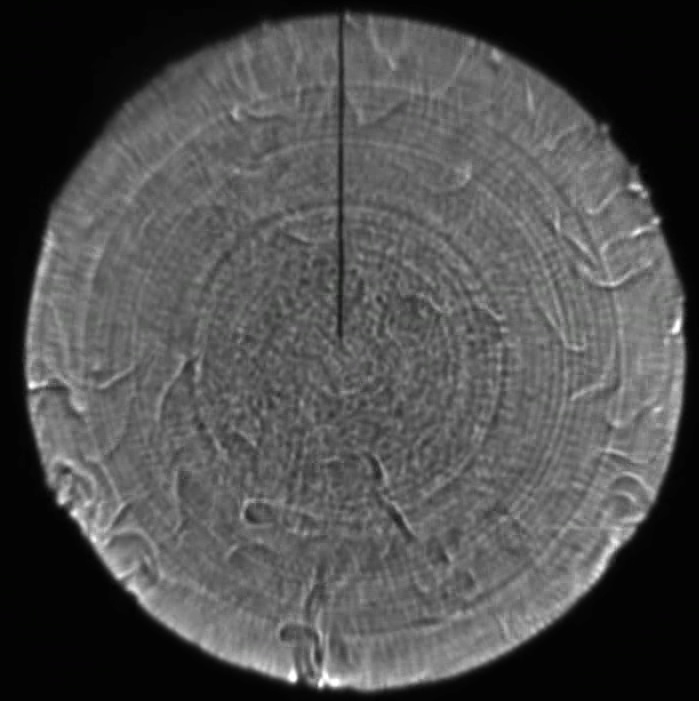Convective quakes and their generating mechanism

This shadow-graphic movie shows the large-scale convective flow in a thin circular Rayleigh-Benard cell heated from below and cooled from the top. The convection cell has the shape of a thin disk with its circular plane orientated vertically parallel to gravity. The movie was obtained using water as the working fluid and at Ra = 4.8 �� 109. It is played 6 times faster than the real time and the inner diameter of the convection cell is 18.8 cm. The black wire in the middle of the image is a thermistor, which is used to measure the temperature at the cell center.
Click the picture to see the large-scale motion of the convective flow in the thin circular cell. It has a long steady state (��quiet period��) with a stable large-scale circulation (LSC) across the entire cell, interrupted by an intermittent short eruption state (��active period��). In the eruption state, the massive eruption of thermal plumes destroys the LSC and the flow in the thin convection cell becomes chaotic. The movie clip recorded the change of the large-scale flow during an eruption event, with the steady-state LSC initially rotated in the anti-clockwise direction. After the eruption, the LSC resumes with an equal probability to rotate in either clockwise or anti-clockwise directions.